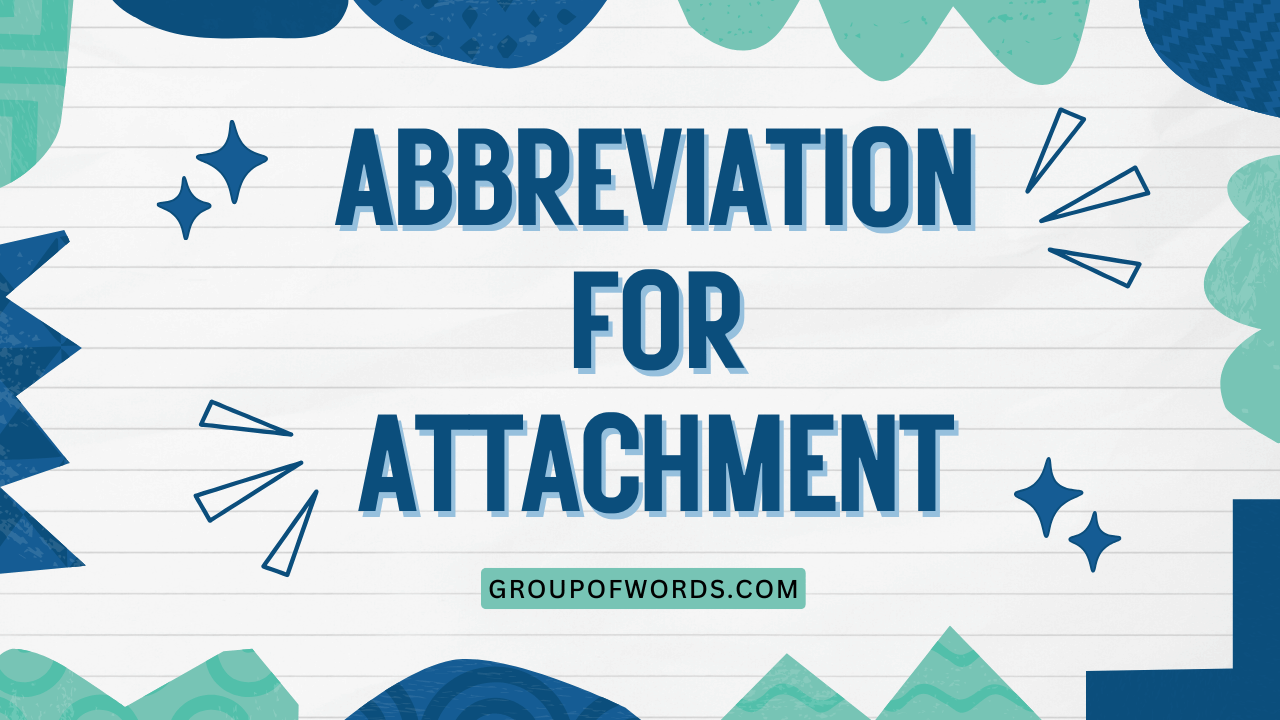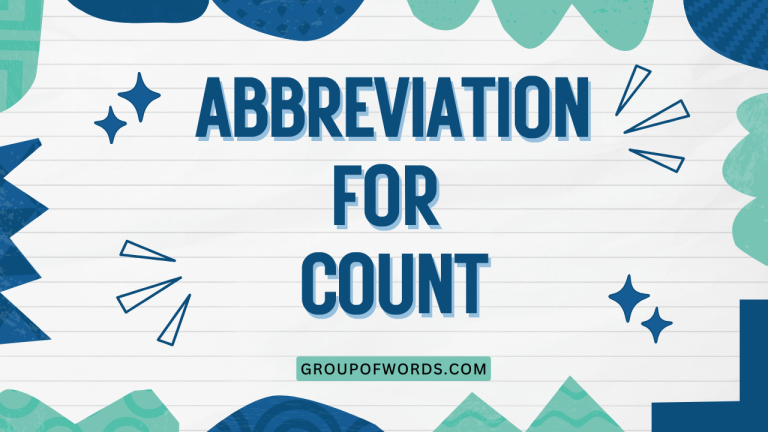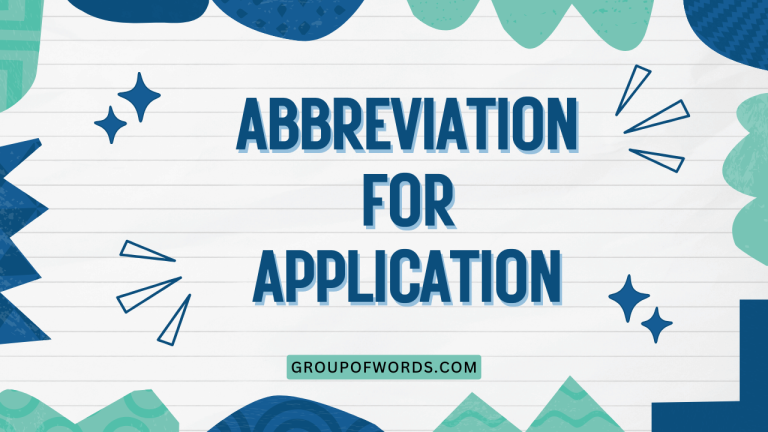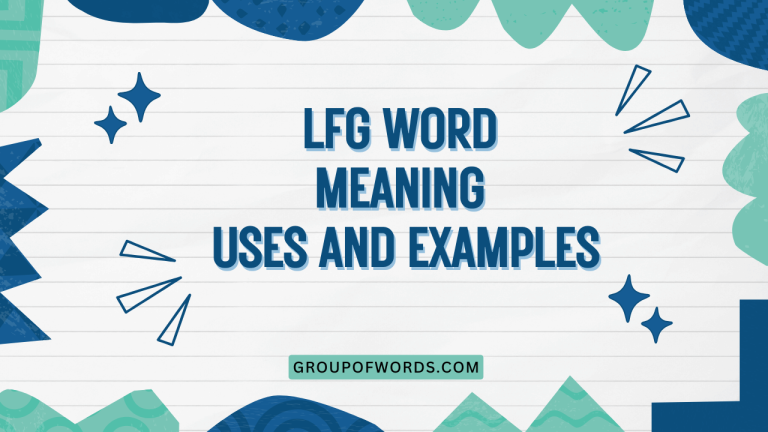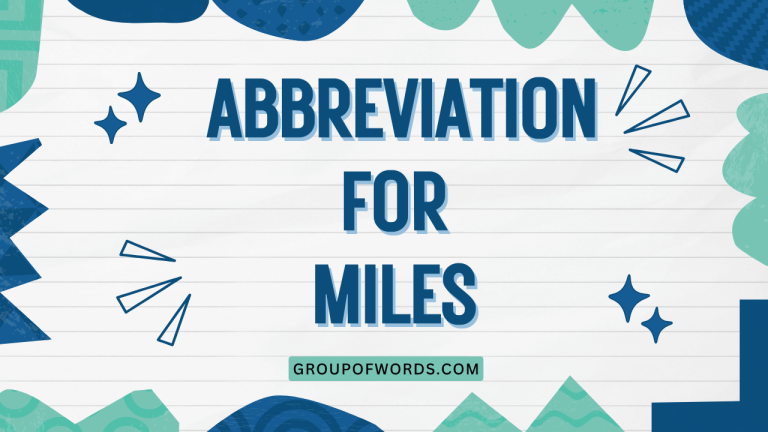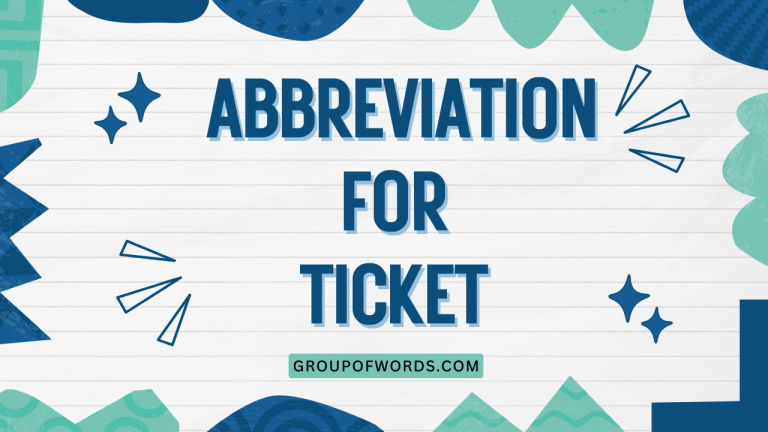Abbreviations for ‘Attachment’: A Comprehensive Guide
Understanding abbreviations is crucial in modern communication, especially in professional settings. The term “attachment,” frequently used in emails and documents, is often shortened for brevity.
This article provides a comprehensive guide to the abbreviations for “attachment,” covering their definitions, usage, and common pitfalls. Whether you are a student, a professional, or simply someone looking to improve your communication skills, this guide will help you master the art of using abbreviations for “attachment” correctly and confidently.
This guide will cover the various abbreviations, their appropriate contexts, and the rules governing their usage. We will also explore common mistakes and provide practice exercises to solidify your understanding.
By the end of this article, you will be well-equipped to use these abbreviations effectively in various communication scenarios.
Table of Contents
- Introduction
- Definition and Explanation
- Structural Breakdown
- Types and Categories
- Examples
- Usage Rules
- Common Mistakes
- Practice Exercises
- Advanced Topics
- FAQ
- Conclusion
Definition and Explanation
An “attachment” refers to a file that is sent along with an email message. These files can be documents, images, videos, or any other type of digital content.
In professional and casual communication, abbreviations are often used to represent “attachment” to save time and space. Understanding these abbreviations and their appropriate usage is essential for clear and effective communication.
The primary abbreviations for “attachment” are “Att,” “Att.,” “Attach.,” and “Attachments” (when referring to multiple files). The choice of abbreviation often depends on the context, formality, and personal preference. Each abbreviation serves the same basic function: to indicate that a file is included with the message.
The function of these abbreviations is primarily to inform the recipient that additional files are included with the message. This is particularly important in professional contexts where important documents or information may be contained in the attached files.
Using the correct abbreviation helps to ensure that the recipient is aware of the attachments and can access them accordingly.
Structural Breakdown
The abbreviations for “attachment” are derived by shortening the original word. Here’s a breakdown of their structure:
- Att: This is the shortest form, typically used in informal contexts. It’s a simple truncation of the word “attachment.”
- Att.: This is the same as “Att” but includes a period, indicating an abbreviation. The period adds a touch of formality.
- Attach.: This is a longer abbreviation that includes more of the original word. The period signifies that it is not the full word.
- Attachments: This is the plural form, used when referring to more than one attached file. It can be abbreviated as “Atts.” or “Atts.”.
The use of a period after the abbreviation is a matter of style. Some style guides recommend using a period after abbreviations, while others do not.
Consistency is key – choose a style and stick to it throughout your communication.
The plural form “Attachments” indicates that the email contains multiple files. It’s important to use the correct form to avoid confusion.
When referring to a single file, use the singular abbreviations (“Att,” “Att.,” or “Attach.”).
Types and Categories
The abbreviations for “attachment” can be categorized based on their length and formality:
Short Forms
- Att: The most concise form, suitable for informal emails and quick notes.
- Att.: A slightly more formal version of “Att” with a period.
Longer Forms
- Attach.: A more complete abbreviation, often preferred in professional settings.
Plural Forms
- Attachments: The full plural form, used when referring to multiple files.
- Atts.: Abbreviated plural form, less common but still acceptable.
Formal vs. Informal Usage
The choice of abbreviation also depends on the context of the communication. In formal settings, such as business emails or official documents, “Attach.” or “Attachments” are generally preferred.
In informal settings, such as personal emails or text messages, “Att” or “Att.” may be more appropriate.
Consider your audience and the purpose of your communication when choosing an abbreviation. If in doubt, it’s always best to err on the side of formality.
Examples
Here are several examples demonstrating the use of abbreviations for “attachment” in different contexts. These examples are categorized to illustrate the various ways these abbreviations can be used.
Examples in Emails
The following table showcases how abbreviations for “attachment” can be used in email communication. Notice the variation in formality and context.
| Context | Example Sentence |
|---|---|
| Informal Email | Hey, check out the photo att. |
| Informal Email | I’ve included the document, att. |
| Professional Email | Please find the report attach. to this email. |
| Professional Email | The contract is attached for your review. |
| Professional Email (Multiple Files) | Please find the supporting documents as attachments. |
| Quick Note | Invoice att. |
| Informal Email | See the file att. |
| Professional Email | The presentation slides are attach. |
| Professional Email (Multiple Files) | The images are in the attachments below. |
| Informal Note | Details att. |
| Formal Report | Refer to the data attach. |
| Personal Email | Pictures from vacation att. |
| Business Correspondence | Agreement form attach. |
| Casual Message | Document att. |
| Business Email | Proposals included as attachments. |
| Informal Email | Video file att. |
| Professional Email | Additional information attach. |
| Business Email | Updated details attach. |
| Formal Report | Graphs and charts attachments. |
| Personal Message | My resume is attach. |
| Formal Email | Please find the budget report attach. to this email. |
| Informal Email | I’ve included the updated schedule, att. |
| Professional Email | The meeting minutes are attached for your review. |
| Professional Email (Multiple Files) | Please find the supporting documents as attachments. |
| Quick Note | Agenda att. |
| Informal Email | See the file att. |
| Professional Email | The presentation slides are attach. |
| Professional Email (Multiple Files) | The images are in the attachments below. |
| Informal Note | Details att. |
| Formal Report | Refer to the data attach. |
Examples in Memos
Memos often require a formal tone. Here are examples of how to use “attachment” abbreviations in memos.
| Context | Example Sentence |
|---|---|
| Internal Memo | Please review the policy changes attach. |
| Formal Memo | The financial statements are included as attachments. |
| Informal Memo | Quick update att. |
| Internal Memo | See the project timeline att. |
| Formal Memo | Supporting documents are provided as attachments. |
| Internal Memo | Please review the updated proposal attach. |
| Formal Memo | The employee handbook is included as an attachment. |
| Informal Memo | Meeting notes att. |
| Internal Memo | See the marketing plan att. |
| Formal Memo | All relevant data is provided as attachments. |
| Internal Memo | Please review the budget forecast attach. |
| Formal Memo | The compliance reports are included as attachments. |
| Informal Memo | Project details att. |
| Internal Memo | See the revised strategy att. |
| Formal Memo | All supporting documents are provided as attachments. |
| Internal Memo | Please review the audit findings attach. |
| Formal Memo | The performance metrics are included as an attachment. |
| Informal Memo | Training schedule att. |
| Internal Memo | See the risk assessment att. |
| Formal Memo | All relevant information is provided as attachments. |
| Internal Memo | Please review the sales figures attach. |
| Formal Memo | The project proposals are included as attachments. |
| Informal Memo | Team updates att. |
| Internal Memo | See the market analysis att. |
| Formal Memo | All confidential data is provided as attachments. |
| Internal Memo | Please review the customer feedback attach. |
| Formal Memo | The research findings are included as attachments. |
| Informal Memo | Event summary att. |
| Internal Memo | See the product specifications att. |
Examples in Reports
Reports often require a formal tone. Here are examples of how to use “attachment” abbreviations in reports.
| Context | Example Sentence |
|---|---|
| Business Report | The data analysis is attach. |
| Financial Report | Supporting documentation is provided as attachments. |
| Sales Report | Detailed sales figures are attach. |
| Marketing Report | The campaign results are included as attachments. |
| Project Report | The project timeline is attach. |
| Business Report | The market research is attach. |
| Financial Report | Audited statements are provided as attachments. |
| Sales Report | Regional performance data is attach. |
| Marketing Report | The customer segmentation is included as attachments. |
| Project Report | The risk assessment is attach. |
| Business Report | Competitor analysis is attach. |
| Financial Report | Budget projections are provided as attachments. |
| Sales Report | Product-specific sales data is attach. |
| Marketing Report | The brand strategy is included as attachments. |
| Project Report | The status update is attach. |
| Business Report | Industry trends are attach. |
| Financial Report | Cash flow statements are provided as attachments. |
| Sales Report | Quarterly performance data is attach. |
| Marketing Report | The media plan is included as attachments. |
| Project Report | The resource allocation is attach. |
| Business Report | The SWOT analysis is attach. |
| Financial Report | Tax returns are provided as attachments. |
| Sales Report | Annual growth data is attach. |
| Marketing Report | The communication strategy is included as attachments. |
| Project Report | The change management plan is attach. |
| Business Report | The economic outlook is attach. |
| Financial Report | Investment summaries are provided as attachments. |
| Sales Report | Customer acquisition data is attach. |
| Marketing Report | The marketing calendar is included as attachments. |
Usage Rules
There are several rules to follow when using abbreviations for “attachment” to ensure clarity and professionalism:
- Consistency: Choose one abbreviation style (e.g., “Att.,” “Attach.”) and use it consistently throughout your communication.
- Context: Consider the formality of the context. Use more formal abbreviations (“Attach.,” “Attachments”) in professional settings and shorter forms (“Att,” “Att.”) in informal settings.
- Pluralization: Use the plural form (“Attachments”) when referring to multiple files.
- Clarity: Ensure that the abbreviation is clear and easily understood by the recipient. Avoid using obscure or uncommon abbreviations.
- Placement: Clearly indicate that the file is attached. For example, “Please see the report attach.” is better than simply writing “Report attach.”
Additionally, be mindful of the specific requirements of your organization or industry. Some organizations may have specific guidelines for using abbreviations in official communications.
Adhering to these guidelines ensures consistency and professionalism.
Common Mistakes
Here are some common mistakes to avoid when using abbreviations for “attachment”:
- Incorrect Abbreviation: Using an abbreviation that is not commonly recognized or understood.
- Inconsistent Usage: Mixing different abbreviations within the same document or email.
- Incorrect Pluralization: Using the singular form when referring to multiple files, or vice versa.
- Lack of Clarity: Failing to clearly indicate that a file is attached.
Here’s a table illustrating some common mistakes and their corrections:
| Incorrect | Correct | Explanation |
|---|---|---|
| See file atch. | See file att. | “Att” is a more standard abbreviation. |
| Report atts. | Reports attachments. | “Attachments” is clearer in formal contexts. |
| Document attach | Document attach. | Add a period to indicate abbreviation. |
| Files att. | Files attachments. | Use the plural form “attachments” for multiple files. |
| Attachment Att. | Attachment attach. | Avoid redundancy. |
| Policy attachmnt. | Policy attach. | Misspelling is avoided. |
| Statement atch. | Statement att. | “Att” is a more standard abbreviation. |
| Reports atts. | Reports attachments. | “Attachments” is clearer in formal contexts. |
| Guideline attach | Guideline attach. | Add a period to indicate abbreviation. |
| Docs att. | Docs attachments. | Use the plural form “attachments” for multiple files. |
| Attachment Att. | Attachment attach. | Avoid redundancy. |
| Assessment attachmnt. | Assessment attach. | Misspelling is avoided. |
Practice Exercises
Test your understanding with these practice exercises. Choose the correct abbreviation for “attachment” in each sentence.
Exercise 1
| Question | Options | Answer |
|---|---|---|
| Please find the invoice ____ to this email. | a) att b) attach. c) attachments | b) attach. |
| I’ve included the photos, ____. | a) att b) attach. c) attachments | a) att |
| The supporting documents are included as ____. | a) att b) attach. c) attachments | c) attachments |
| See the updated schedule ____. | a) att b) attach. c) attachments | a) att |
| The contract is ____ for your review. | a) att b) attach. c) attach. | c) attach. |
| The budget is ____. | a) att b) attach. c) attachments | b) attach. |
| Please find the report ____ to this email. | a) att b) attach. c) attachments | b) attach. |
| I’ve included the images, ____. | a) att b) attach. c) attachments | a) att |
| The relevant data are included as ____. | a) att b) attach. c) attachments | c) attachments |
| See the project plan ____. | a) att b) attach. c) attachments | a) att |
Exercise 2
Correct the following sentences, if necessary. If the sentence is already correct, write “Correct.”
| Question | Answer |
|---|---|
| See file atch. | See file att. |
| Reports atts. | Reports attachments. |
| Document attach. | Correct |
| Files att. | Files attachments. |
| Attachment Att. | Attachment attach. |
| Agreement attachmnt. | Agreement attach. |
| See file atch. | See file att. |
| Reviews atts. | Reviews attachments. |
| Outline attach. | Correct |
| Docs att. | Docs attachments. |
Advanced Topics
For advanced learners, here are some more complex aspects of using abbreviations for “attachment”:
- Style Guides: Different style guides (e.g., AP, Chicago) may have specific recommendations for using abbreviations. Familiarize yourself with the style guide relevant to your field or organization.
- International Usage: Be aware that abbreviations may vary in different countries or languages. If communicating with an international audience, consider using the full word “attachment” to avoid confusion.
- Accessibility: When using abbreviations, consider the accessibility of your communication. Some readers may not be familiar with abbreviations, so it’s important to use them judiciously and provide context when necessary.
Understanding these advanced topics can help you use abbreviations for “attachment” with greater precision and sensitivity.
FAQ
- What is the most common abbreviation for “attachment”?
The most common abbreviations are “Att,” “Att.,” and “Attach.” The choice often depends on the context and formality of the communication.
- Is it necessary to use a period after the abbreviation?
The use of a period is a matter of style. Some style guides recommend using a period, while others do not. Consistency is key – choose a style and stick to it.
- When should I use “Attachments” instead of “Att”?
Use “Attachments” when referring to multiple files. “Att” and “Att.” are typically used for a single file.
- Is it acceptable to use “Atts” as an abbreviation for “Attachments”?
While “Atts” is sometimes used, it is less common and may not be universally understood. It is generally better to use the full word “Attachments” or “Attach.” when referring to multiple files, especially in formal communications.
- What if I’m unsure whether my recipient understands the abbreviation?
In cases where you are unsure if your recipient understands the abbreviation, it’s best to use the full word “attachment.” Clarity is always more important than brevity.
- Are there any situations where I should avoid using abbreviations for “attachment”?
Yes, in very formal documents or legal communications, it’s best to avoid abbreviations altogether and use the full word “attachment” to ensure clarity and precision.
- How do I ensure consistency in my use of abbreviations?
Choose one abbreviation style (e.g., “Att.,” “Attach.”) and use it consistently throughout your communication. Also, refer to style guides relevant to your field or organization for specific recommendations.
- Can the abbreviation for “attachment” be used in spoken language?
No, the abbreviations for “attachment” are typically used only in written communication. In spoken language, you would say “attachment” fully.
Conclusion
Mastering the abbreviations for “attachment” is a valuable skill for effective communication in both professional and personal contexts. By understanding the different forms, usage rules, and common mistakes, you can confidently use these abbreviations to save time and space while maintaining clarity and professionalism.
Remember to consider the context, audience, and purpose of your communication when choosing an abbreviation.
Continue practicing and refining your understanding of these abbreviations to enhance your communication skills. With consistent effort, you’ll become proficient in using abbreviations for “attachment” effectively and appropriately in any situation.
Always prioritize clarity and consistency in your writing to ensure your message is easily understood.
